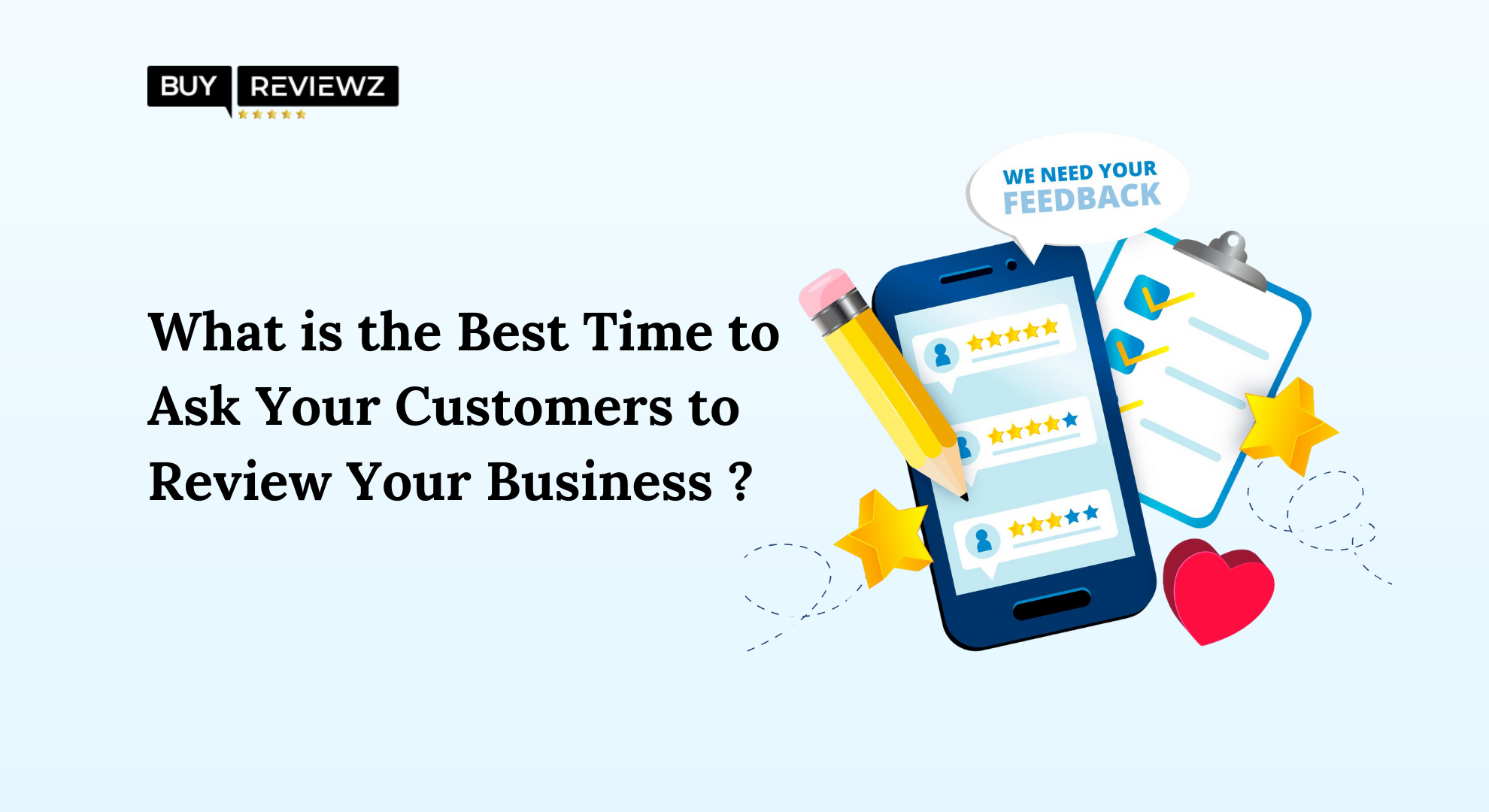
Do you know businesses that ask for Google reviews at the right time can see a 60% increase in positive feedback? Timing isn’t just a nice-to-have factor; it’s a critical component that can make or break your review strategy.
The moment you ask your customers for feedback can significantly influence the nature of the reviews you receive. Positive reviews not only boost your credibility but also enhance your online visibility, making it easier for potential customers to trust your brand.
Businesses and brands even opt to buy Google reviews to boost their visibility and credibility. This blog explores the nuances of customer behavior, the right moments for requesting reviews, and practical tips for integrating these requests into your communication strategy.
Why Timing Matters To Understand Customer Behavior?
Every interaction with a potential customer or client, from the very first to the post-purchase experience, will matter. A happy customer is most likely to leave a review, especially if their expectations have been exceeded.
You have to feel your customers’ emotions. This is because a customer who has just had a great interaction with your support team or has resolved an issue that has been bugging them for some time will be in a totally different mindset than a customer who is still struggling with the issue at hand.
For instance, when the buyer has just received the product, which is right on time, perhaps even earlier than expected, and the product is exactly as described, he will be in a good mood. It is the best moment to request a review.
However, requesting feedback before the customer has adequately experienced your product or service might result in more neutral or less enthusiastic feedback.
When to Ask for Google Reviews?
As you have understood the psychology of consumer behavior, it is essential to strategize your review requests to boost your business. Consider the following strategies:
- Post-purchase or Service Completion
The ideal time to request a review is just after making a sale or after rendering a service. That is when a customer has fresh experiences and is most probably at the highest satisfaction level.
You could include a review prompt in your post-purchase thank you email to provide seamless integration for this request. “We hope you are enjoying your new [product/service]. Would you mind sharing your experience with us?” encourages a good review.
- After Providing Support or Resolving an Issue
Customers whose problems are solved quickly and effectively can often become some of your business’s most loyal supporters. Thus, they are perfect customers for reviews.
A message like this could do wonders for a review that was fast heading negative: “We’re happy to have been able to source the parts through the warranty. The clunking issue is addressed. If you have a minute, we would love to hear your feedback about our service.”
- During High Engagement Moments
High-engagement is when a customer interacts actively with your brand, maybe through your product, taking part in an event, or even through your content.
For example, if you’ve just finished holding a webinar and your potential reviewer has just received his certificate from one of your helpful courses, this would be a good time to ask for a review.
Something like, “Thank you for coming to our webinar! Our goal is to make everything we do as effective as possible. Would you take a few seconds and let us know how we’re doing?” will probably elicit a quick—and positive—reply.
- Picking the Best Day of the Week
It has been proven that some days are better than others when it comes to receiving feedback. For instance, Tuesdays and Wednesdays are ordinarily the best days to solicit reviews. This likely is because most people already get into the week and are hence more predisposed to take time to give well-reasoned feedback.
Ideally, timing your review requests to drop in at the busiest, most productive times will give you more of the feedback you’re after—positive, of course.
- Custom Consideration Within Follow-Up Emails
When you create messages that reflect the particular experience of the customer, you communicate value for his or her journey with you. This means you stand a better chance of not only getting the review but also getting a positive one.
For instance, if you want to follow up with a customer who has just recently bought something specific, then your request for the review should mention that.
A message like “We noticed you recently purchased [product]. How has it been working for you? We would really love your feedback!” makes it seem more relevant and personal, hence increasing the chances of responses.
Conclusion
The timing—when people are most appreciative of your brand—is everything: after making a purchase, when a problem is solved, at the peak of engagement, or just on the right day of the week which can make all the difference to increase the chances of receiving a positive review.
An effective review request strategy doesn’t just improve your online reputation, it’s about building closer relationships with customers. What’s the hold? Get on with review request timing, and see your positive feedback increase. And if you have a desire to further boost this online reputation, consider getting help from social media growth providers like Buyreviewz to uplift your business credibility. Combine these with the right tools and providers, and you’re all set to build a strong and trustworthy online presence.




